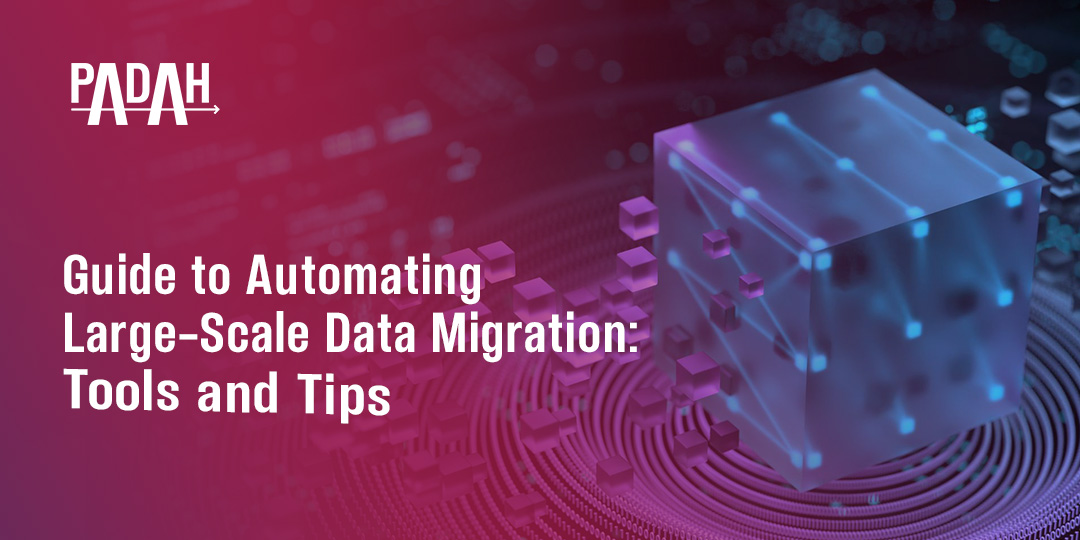Moving mountains of data can feel like an overwhelming task. Large-scale data migrations are crucial for businesses undergoing system upgrades, cloud adoption, or data consolidation. However, manual data migration is not only time-consuming but also prone to errors. Let’s discuss the ‘how and why’ of automating data migration.
Why Automate Large-Scale Data Migration?
The benefits of automation are numerous:
- Efficiency Boost: Automating repetitive tasks significantly reduces the time it takes to complete your migration. Imagine your team focusing on strategic initiatives instead of manual data manipulation.
- Enhanced Accuracy: Human error is a natural part of manual data migration. Automation minimizes these errors, ensuring data integrity and consistency throughout the process.
- Cost Savings: Reduced manual effort translates to cost savings. Automating your data migration frees up your team’s time and reduces the need for additional resources.
- Scalability Power: When dealing with massive datasets, automation proves invaluable. Scripts and tools can handle large volumes of data efficiently, regardless of the size of your migration project.
- Repeatability Champion: Automation ensures consistency across migrations. Once you’ve established your automated procedures, you can replicate them for future projects with minimal adjustments.
Essential Tools for Your Automation Arsenal
To conquer the world of automated data migration, you’ll need the right tools:
- Data Extraction Tools: These tools, like scripting languages or data pumps, extract data from your source systems, preparing it for the migration journey.
- Data Transformation Tools: Data isn’t always a perfect fit between systems. Data mapping and cleansing tools ensure your data is compatible with the target system and free of errors.
- Data Loading Tools: Once your data is prepped, it needs a landing spot. Bulk loading tools and ETL/ELT tools efficiently transfer data into your target system.
- Data Integration Tools: For complex data environments, data warehousing or data lake tools can integrate your migrated data with existing systems, creating a unified data landscape.
- Cloud-Based Migration Tools: Cloud providers offer built-in migration services, and third-party tools exist specifically for cloud migrations, simplifying the process when moving to the cloud.
Planning for Smooth Takeoff
Before launching your automated migration, some crucial considerations are key:
- Planning and Analysis: Clearly define the scope of your migration, identify data sources and targets, and establish data quality requirements. Don’t skip this step – a solid foundation is essential for a successful migration.
- Data Profiling and Cleansing: Ensure your data is consistent and compatible across systems. Inconsistent formats or missing values can cause errors down the line. Data profiling and cleansing tools help you identify and address these issues.
- Error Handling and Recovery: Even with automation, errors can occur. Develop a strategy to identify and address potential errors during migration, minimizing disruptions and ensuring data integrity.
- Testing and Validation: Just like a pre-flight check, thorough testing is crucial. Test your automated migration processes to ensure accuracy and completeness before migrating your entire dataset.
- Monitoring and Reporting: Keep an eye on your migration progress. Use monitoring tools to identify bottlenecks and generate reports for future reference. This allows you to refine your automation for even smoother migrations in the future.
Best Practices for Automated Data Migration Take Flight
Here are some additional tips to ensure your automated migration soars:
- Leverage Scripting Languages: Python, Bash, and other scripting languages are powerful tools for automating repetitive tasks during migration.
- Track Your Data Lineage: Data lineage tools help you track the flow and transformations of your data throughout the migration process. This is invaluable for maintaining data integrity and auditing purposes.
- Incremental Migration: For real-time data updates or ongoing data feeds, consider implementing incremental data migration strategies. This approach ensures your data remains current in the target system.
- Schedule Your Automation: Schedule automated data migration tasks to minimize disruption to ongoing operations. Nighttime or weekends can be ideal times to run your migration scripts.
- Document Your Journey: Document the entire migration process, including the tools used, configurations, and troubleshooting steps. This documentation becomes a valuable resource for future migrations and knowledge transfer within your team.
About PADAH Solutions
Automating large-scale data migration unlocks a world of efficiency, accuracy, and cost savings. But navigating this complex process can still feel overwhelming. That’s where Padah Solutions steps in as your trusted partner.
Padah Solutions offers a comprehensive suite of data migration services and expertise to help you achieve a seamless and successful migration, including:
- Expert Consultation: Our team of certified data migration specialists will assess your specific needs, develop a customized migration plan, and identify the optimal tools for your project.
- Customizable Automation Strategies: We leverage leading data migration tools and scripting languages to automate repetitive tasks, ensuring data integrity and minimizing errors throughout the process.
- End-to-End Project Management: We take the reins, managing the entire migration process from planning and execution to validation and post-migration support.
- Ongoing Support and Guidance: We don’t disappear after the migration is complete. Our team provides ongoing support and guidance to ensure a smooth transition and address any post-migration challenges.
Ready to unlock the true potential of data migration automation? We can help you navigate the complexities of large-scale data migration with confidence, ensuring a successful journey to your new data environment. Schedule a free consultation to discuss your specific needs and discover how Padah can be your data migration partner of choice!
